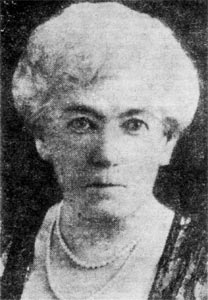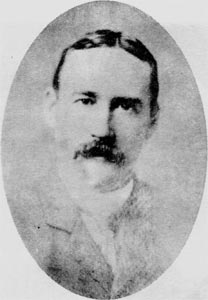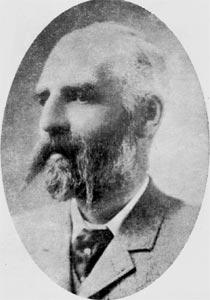
Sydney Rows
A Centennial History of the Sydney Rowing Club, 1970, by A L May
Table of Contents
Chapters
- Preliminaries: before 1870
- Foundations: 1870-1880
- New Clubs: 1880-1890
- The Amateur Question: 1890-1900
- Sydney on Top: 1900-1910
- Henley and War: 1910-1920
- Pearce and Mosman: 1920-1930
- Financial Problems: 1930-1940
- War and Wood: 1940-1950
- Strength and Stability: 1950-1960
- On Top Again: 1960-1970
Appendices
4.The Amateur Question: 1890-1900
Sydney Rowing Club commenced the new decade in a very healthy condition. Membership was high and rising, the fleet was in good order with eight boats newly added and the Branch was being well patronised and operating at a profit. The club's assets were valued at £6,207 and, despite the existence of a £1,950 mortgage over the Branch property, they exceeded liabilities by £3,700. "I doubt if there is another club in Australia that can show so splendid a report", said the Sydney Mail of the club's 1889/90 performance, although greater success on the water was needed.
The earlier years of the decade were not, however, terribly exciting. Rowing results remained poor, members were not as keen as would have been liked and some financial problems were encountered. However, in the second half of the decade, new strengths were attained and, in 1899, the Rowing Association's first-ever premiership was won by the club.
One sad loss was suffered early in the decade. In July, 1891, Jim Clark died, aged only 44. "His success as an oarsman, his splendid devotion to rowing, his zeal in working for his club, and his personal virtues placed him head and shoulders ahead of the good workers for amateur sport.... No task was too difficult for him, and all obstacles were cleared away by his energy, sound judgment, and industry", wrote "Trident" in the Sydney Mail.
A committee was soon formed to plan a suitable memorial. Headed by Deloitte, the members included the captains of each Sydney club and many SRC identities. A granite obelisk was erected over his grave at Rookwood, while a challenge cup was also purchased.
Death was also to remove a number of other good Sydney men from the scene. They included Charles Deloitte, murdered by blacks in the Northern Territory in 1892, Alex Finlayson, George Clark (a brother of Jim) and Bill Anslow. John Howard, caretaker of the SRC boathouse for over 20 years, died in 1894.
Further building problems concerned Sydney Rowing Club during the decade. They were not, however, related to the splendid Woolloomooloo clubhouse but to the Branch: by 1891, the accommodation available was "not sufficient for members desirous of residing there". The Branch had permanent boarders (who paid from, 21/- to 25/- a week) while crews in training frequently lived there (and paid 15/- a week per man).
A sub-committee appointed in 1895 to consider additions or rebuilding decided that it was inexpedient to build at that time but considerable improvements were effected. In 1898, a further sub-committee was established to examine plans for proposed alterations, but no action was taken before the end of the decade. At the beginning of 1898, the Branch was connected to the Sydney water supply and a bathroom erected. Sewerage was, however, to remain a problem for some time.
Additions to the fleet were fairly rare. The committee reported in 1895 that "no additions have been made to the club fleet, the number of boats being actually more than is required". Three eights were obtained during the period.
A Fuller built boat was bought in 1891 while Samuel Hordern, head of Anthony Hordern and Sons and a vice-president of the club, presented a Clasper-built eight and two sets of Ayling oars to the club in 1893 (the boat also to be used by the RA when required). The boat was of mahogany with ash timbers and pine fittings, and all seats were off-center. (A year later, as the Samuel Hordern lay on a wharf, a startled pony jumped through the boat and repeated the performance three times.) The third eight was bought in 1897, largely through subscriptions, and was named the J. E. H. Kennedy. Annual reports noted that the fleet was being kept in first-class condition.
The membership and financial positions were not as good as might have been hoped. In mid-1894, there were 110 active members and 125 honorary members but a year later, with overdue subscriptions being pursued, the latter figure had dropped to 86. The one guinea entrance fee for new members was suspended for a year in 1893 to encourage increased membership, and this action was repeated at each annual meeting for the rest of the decade. New members were often public servants, solicitors, bank officers, journalists and from insurance companies and wool broking houses. Employees of Dalgety's and the Bank of New South Wales were especially prominent.
Subscriptions totalled ₤720 in 1890/91 but fell successively to ₤595, ₤465, ₤428 and to ₤305 in 1894/95. They recovered to ₤460 in 1896/97 but thereafter again fell below the ₤400 mark.
The matter of members in arrears was constantly before the committee. Although gross branch receipts remained relatively constant at between ₤400 and ₤500, the committee found it impossible to reduce the £1,950 mortgage on the Branch property. When repayment became due, at the end of 1898, an extension for seven more years was negotiated, while opportunities to buy further land at Abbotsford had to be turned down.
The ordinary bank overdraft climbed to ₤499 at the end of 1894/95, but was down to ₤280 by 1898/99. This was the year the Sydney Mail described the club as "perhaps the most heavily indebted of any club in Australasia", adding, "but it is also the wealthiest". The club at this time had three permanent employees-a caretaker and assistant caretaker at the Sydney shed (at ₤2 and 12/6 a week respectively), and a housekeeper at the Branch.
Some significant rule changes were made in the decade. The annual meeting of July, 1893, made provision for a vice-captain of the club while, a year later, the life membership rule was altered to allow members of ten or more years standing to qualify by the payment of a further ten guineas only. Vice-presidents were also made members of the committee ex-officio.
In April, 1895, a sub-committee was appointed to revise the rules and by-laws and the annual meeting a few months later approved their work with only slight amendment. The rules and by-laws were again revised in 1898 and were approved by the annual meeting of that year.

Mrs Eadith Walker
A woman became an office-bearer of the club in 1895. She was Miss Eadith Walker of Yaralla, a keen oarswoman and supporter of the club, who was invited and consented to become a vice-president. George Thornton remained president for yet another decade, while familiar names on the list of vice-presidents included Deloitte (who took the chair at numerous club functions), Dibbs, Cope, Simpson and Burne. Samuel Hordern proved a worthy addition, while J. R. Fairfax (Sir James from 1898) returned to the list in 1895. Retiring office-bearers were also added to the list of vice-presidents which, by 1900, had grown to fifteen. The club enjoyed vice-regal patronage for most of the decade although breaks seem to have occurred in 1891/92, 1895/96 and 1898/99.

Charles Dobson
Four men held the captaincy during the ten-year period. Charles Dobson was captain for a further four years, Ted Kennedy for three, Ted Pearson for two and Clarence Smith for the final year.
Pearson had an extra claim to fame - at a time when cycling was enjoying a vogue and even making inroads into the rowing ranks, Pearson set a new record by covering 301 miles in 24 hours and he later lowered the Melbourne-Sydney record to 49 hours (and this stood for many years).
The first person to hold the new office of vice-captain was Jim Oatley, a foundation member of the club, who retired from the position in 1897 after five years. The position of honorary secretary changed frequently after John Warren completed his five-year term in 1894 and the duties of honorary treasurer seemed so unattractive that eight persons were needed to get through the decade. Only T. Ferris held the position for more than a single year.

J W Warren
Among the keenest committee members were Harry (later Sir Henry) Braddon, Charles Ebsworth and A. B. Tunmer. Committee meetings themselves were held at least monthly, and often more frequently, while the half-yearly general meeting in addition to the annual meeting continued.
The social scene at the club became rather more lively. A series of very successful moonlight concerts, complete with string bands, was held at the Branch during the "naughty 'nineties". The grounds were illuminated with Chinese lanterns and large attendances were attracted. Smoke concerts were also conducted, at which trophies were presented and special presentations made.

1899 Moonlight Picnic
At one such function in 1892, a 14-year-old coxswain, Sid Hellings, was the guest of honour. A year before, he had fallen off a horse and fractured his elbow so badly that his arm was amputated. Only months later, he was coxing again, a special rig being devised to allow him to steer. (He went on to gain selection in the intercolonial eights in 1892, 1893 and 1894.) Other presentations were made to Warren in 1894, Dobson in 1895 (the group of photos still in the club's possession today) and Ted Kennedy in 1898.
Dinners were arranged from time to time but not, apparently, on a regular annual basis. Consideration was given in 1898 to the holding of an annual ball but no action was taken.
Other Clubs
Many of the other Sydney clubs ran into misfortune during the decade. Mercantile fell on hard times. It was very strong in the early years, but slowed almost to a halt after 1893. In 1897, even "Trident" was writing that the club had "had a year of troubles and it is hard to, say what the outcome will be".
In 1898, a general meeting passed resolutions reforming the club and adopting new rules and officers, John Blackman, the captain since 1889, retiring. Losses sustained in running the branch at Parramatta had amounted to over ₤2600, and were largely responsible for the reduction of the club's assets from ₤3,050 in 1891 to ₤600 in 1899.
Balmain floundered in the early years, withdrawing from the RA in 1892 due to financial difficulties. It recovered well around 1894, then having 90 members and 11 boats, and ended the decade with assets valued at ₤700.
East Sydney could count 136 members and 22 boats in 1892 and topped the year by winning the championship eights. It was unable to hold the situation, however, and despite Jack Myers' continuing hold on the reins its activity gradually declined.
Glebe had only moderate success in the first five years of the decade but, strangely, things improved after 1897 when the shed at Blackwattle Bay and all the boats were destroyed by fire. The £570 insurance claim was promptly paid, a new shed was opened only months later and a new fleet ordered. The 1897/98 report was the club's best ever, with 92 members and 11 boats, and the decade ended strongly for the club.
Leichhardt showed little activity, despite continued support from W. M. Hughes, and it too ran into trouble in 1897 when its club house blew down and all boats were destroyed. It was re-erected and was soon reported to be flourishing.
North Shore remained active, doing well in racing, and, in 1894, had 113 members and 14 boats and was considering a new and more ample boathouse site. Parramatta Rowing Club struggled on more or less, but nothing was heard from the Manly Club after 1892.
Balmain Working Men's Rowing Club changed its name in 1892 to Balmain Enterprise Rowing Club and continued to have considerable success in races for manual labour amateurs and all-comers - not only in Sydney but on the northern rivers and even in Tasmania. It joined the NSWRA in 1894, but withdrew in 1899 due to financial problems (by which time its membership was largely "pure" amateur).
North Shore Working Men's Rowing Club was not heard of in the decade at all, the same applying to the clubs at Penrith, Botany, Lane Cove, Folly Point, Ryde and Kogarah Bay. A new club at Kogarah Bay, "Endeavour", was formed in 1891, but appears to have lasted only two or three years.
There were developments in university and school rowing. Intercollegiate rowing was introduced in Sydney in 1892 (in fours) with St. Paul's winning the first and most of the succeeding races. Sydney University competed with distinction in club races and, in 1896, supplied five rowers and the coach of the intercolonial eight. Sydney won six of the intervarsity races in the decade, Melbourne winning three and Adelaide one. From 1893, the race was rowed for an impressive and valuable trophy presented by old Oxford and Cambridge boat race oarsmen.

Oxford & Cambridge Cup
St. Ignatius' stood out among the schools. In 1892/93, still under the keen Father Gartlan, the club had 23 boats and 130 honorary and life members apart from its student members. And it was held in the highest esteem by all: in 1893 "Trident" wrote that "one remarkable fact is that no other club is the least bit jealous of St. Ignatius, and I have never heard any one say an unkind word of it but all agree that it is worthy of generous support, encouragement, and congratulation".
Sydney Grammar continued some activity, often making use of SRC facilities, while E. J. Robson, a keen Victorian rowing man and the first headmaster of Sydney Church of England Grammar School (Shore), which was founded in 1889, started a rowing club at the school two years later.
Activity among country clubs was varied. Despite destruction of its shed by flooding in 1890, Grafton Rowing Club recovered well and was very strong by the end of the decade. In 1899, it had 50 active and 24 honorary members and a fleet of four fours and four skiffs. Along with Lismore and South Grafton it formed the North Coast Rowing Association in 1899 and commenced liaising with the NSWRA regarding ways and means of qualifying its members as amateurs while still admitting manual labourers and allowing their oarsmen to compete in other sports for cash prizes.
Spasmodic reports of activity came from a dozen or more other clubs during the decade, but few seem to have survived for long. Both clubs at Newcastle closed down, although another commenced in 1900. Interest in rowing was again shared by various other groups. Railway departments, the Government Printing Office and newspapers conducted races in the early years of the decade. In 1894, ladies were again seen rowing on the Parramatta. Miss Walker sponsored a further regatta in which the two daughters of Thomas Dibbs were also prominent. Races for gentlemen and a mixed four were also on the programme of events.
